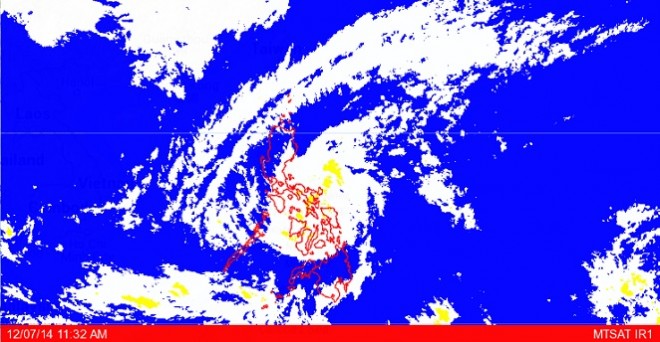
Project NOAH MTSAT image as of December 7, 2014, 11.32 AM. Screengrab from https://noah.dost.gov.ph/
LUCENA CITY, Philippines–An estimated 16,000 people from four thousand families living along the coastal and low lying areas in Quezon have been evacuated as precautionary measure against the threat pose by approaching Typhoon Ruby (Hagupit).
Henry Buzar, provincial disaster risk reduction management council officer, said the evacuees from at least 15 towns along the coast of Lamon Bay, Tayabas Bay and Ragay gulf were temporarily sheltered in 74 evacuation centers.
“We are continuously monitoring and coordinating with local disaster management councils on the weather situation and any untoward incidents in their areas,” Buzar said.
As of Sunday morning, Southern Quezon has been placed under storm Signal Number 2 while the rest of the province is under Signal Number 1.
Governor David Suarez has ordered the suspension of classes in all levels in public and private schools on Monday as the typhoon is expected to be still felt in the province.
Provincial government employees and other volunteers have also started repacking relief goods for evacuees at the Quezon convention center since Friday.
Angelo Sotto, an out-of-school youth, said they were helping in the repacking of relief goods as their help to typhoon victims.
“We have no goods to donate. At least we can help in the packing,” he said. Sotto said his three other neighborhood buddies were also helping in the preparation of relief goods.
Sotto said they also helped in the repacking of relief goods for the victims of typhoons Yolanda last year and Glenda in July.
Quezon province was the worst hit by Typhoon Glenda (international name: Rammasun) in Calabarzon (Cavite, Laguna, Batangas, Rizal and Quezon), leaving at least 31 persons dead and destroyed an estimated P2 billion worth of crops, public and private properties.